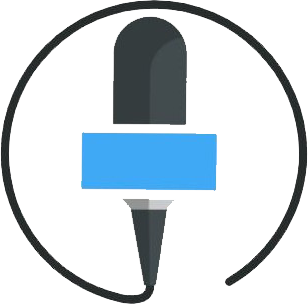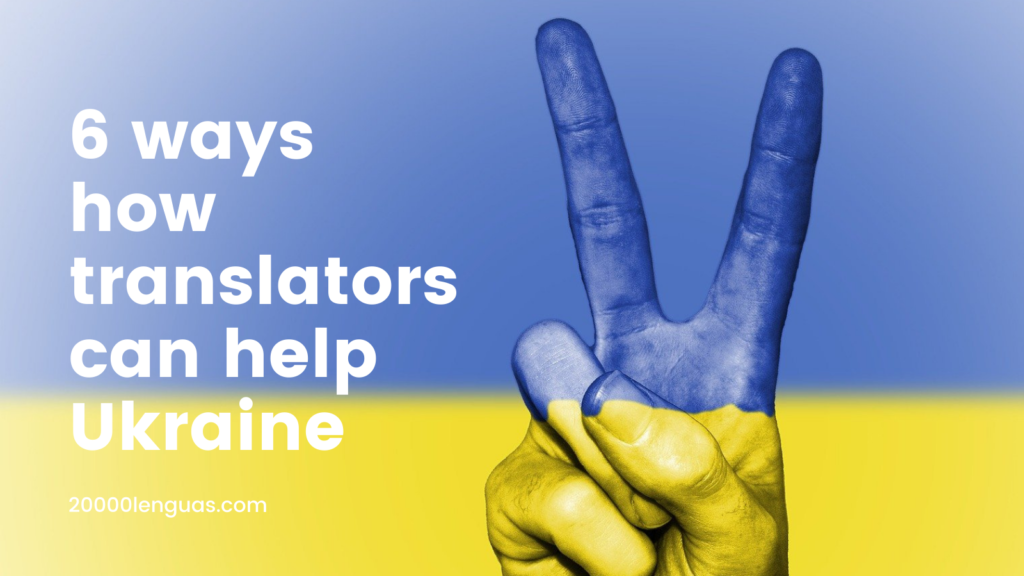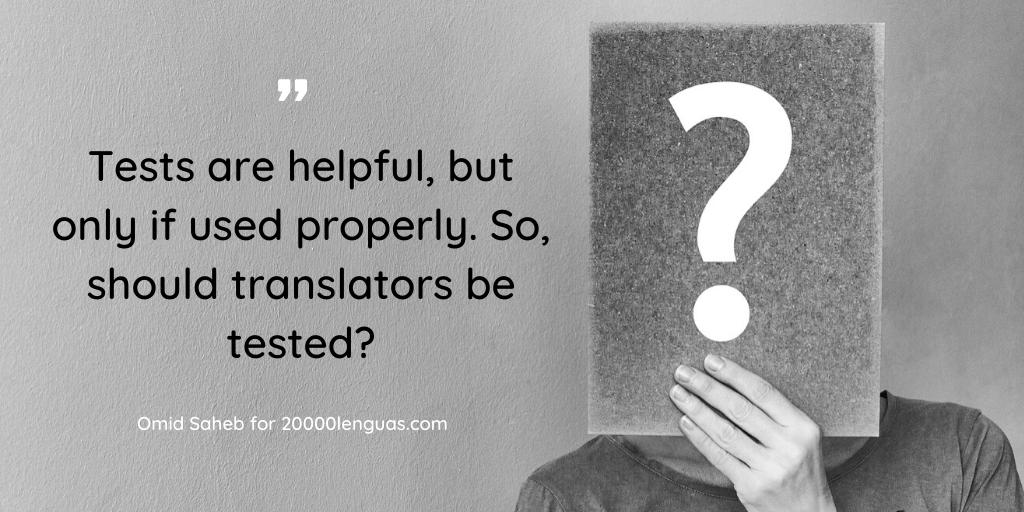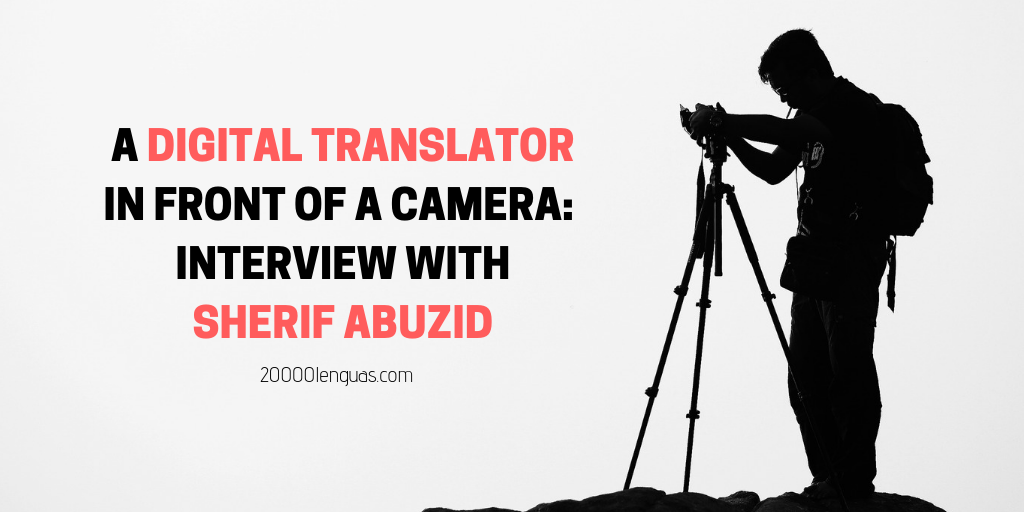Ce site utilise des cookies afin que nous puissions vous fournir la meilleure expérience utilisateur possible. Les informations sur les cookies sont stockées dans votre navigateur et remplissent des fonctions telles que vous reconnaître lorsque vous revenez sur notre site Web et aider notre équipe à comprendre les sections du site que vous trouvez les plus intéressantes et utiles.

The new IATE has landed: interview with Paula Zorrilla, coordinator of the project
Novembre 8, 2018
The new IATE is almost here! This is why we wanted to present you some key ideas about what you can expect from the new IATE. We had the pleasure of interviewing Paula Zorrilla, project coordinator of IATE who gave us some technical and practical trails. Ready to discover them all?
You will find the Spanish version of the interview after the English one.
I would like to ask you about your professional career as a translator, a terminologist and a project manager at the Translation Center of the Bodies of the European Union. Which are your studies and professional experience?
I studied translation and interpreting at the Universitat Jaume I in Castellón (my hometown). Later, I decided to continue expanding my training while working as a freelance translator in order to keep up with the technologies emerging at that time and being able to offer a better and more complete service to my clients. I attained a Postgraduate Programme in Translation Technologies and a Postgraduate Course in Legal Translation at the Autonomous University of Barcelona, a Postgraduate Degree in Editorial Processes at the Open University of Catalonia, and a Master in Terminology at Pompeu Fabra University.
After about 10 years working as a freelance translator, I had the opportunity to join the Translation Centre for the Bodies of the European Union (CdT) as a terminology coordinator in 2008.
Even if a large part of my nearly 11-years long career in the CdT has been strongly linked to terminology, I’ve also worked as a translator and as a translation project manager. Since 2016, I’m working with the IATE Support and Development Team, coordinating the IATE project on behalf of the 10 EU institutions and bodies that finance and direct it, namely the European Parliament, the Council of the European Union, the European Commission, the Court of Justice of the European Union, the Court of Auditors of the European Union, the European Economic and Social Committee, the European Committee of the Regions, the European Central Bank, the European Investment Bank and the Translation Centre for the Bodies of the European Union. This is a great responsibility, and a privilege at the same time.
What does a day in the office look like since when you turn on your computer to when you turn off the lights in your office?
Even if most of the tasks are related to terminology and IATE, each day is different. Currently, a big part of my work consists in coordinating the work of the team of consultants that develops the new version of IATE since 2016. We work following the Scrum framework, which consists of building the system incrementally in monthly iterations. We plan the functionalities that will be developed at the beginning of each month, we meet daily to monitor the progress and detect obstacles, we clarify the specifications when needed and, at the end of the month, we meet with the interinstitutional task force to present the results. Usually, there are always suggestions and adjustments from the IATE partners that we incorporate the following month. With the task force we also define the specifications of each functionality, and I am in contact with all the members almost daily to guide them in their testing activities, to answer their questions and to give them support with the current version of IATE.
Apart from the development of the new version, and the support and maintenance of the current version, I am also in charge of giving presentations and trainings, dealing with the public users’ feedback and managing administrative aspects (activity reports, work programme, statistics, etc.) and the budget of the project. I coordinate the meetings of the task force and I chair the IATE Management Group.
What do you like the most about your profession and what less? Why?
In my 20 years career in the translation field, I have enjoyed each and every aspect of it. All of them enriched me.
In my current position, what I like the most is to provide support to my colleagues from all the EU institutions, you feel good when you help your colleagues to do their job better. What feels more complicated for me is to manage all the planned activities and meetings while dealing also with the large number of unexpected tasks that arise every day, but this is part of the challenges of my job.
Do you think terminology evolved since the beginning of your career, also thanks to the progresses in technology and social networks? If so, why?
In my opinion, quality terminology management has not evolved so much. Analysing a domain, identifying and delimiting concepts, defining them, documenting them and finding equivalents in reliable sources with their corresponding metadata still is, in my opinion, a largely manual and intellectual activity.
There are tools that help accelerate some parts of this process, but they do not offer 100% reliable and validated results at all.
The aspects linked to communication (for example, the identification of new concepts or neologisms, the exchange with communities of experts and the dissemination of terminological work), though, have advanced a lot. The reuse of data from a terminology database in other applications, and the interconnection of tools, are also areas that are constantly evolving.
IATE is updated daily, with an average of 4,000 operations per day
How often are entries, sources and other information updated in IATE? Do you think this rhythm is enough or should it increase in order to improve the IATE effectiveness?
IATE is updated daily, with an average of 4,000 operations (creation, modification or deletion of data) per day. This work is carried out mainly by translators, terminologists and terminology coordinators of the European Union institutions. Obviously, given the volume of the database (1.2 million entries), much data is not updated because the topic is not current at this time. In fact, linguists work mainly on the concepts they need for documents being prepared (IATE is mainly a database aimed at facilitating the work of translators). There is also an important task of daily consolidation and cleaning, since IATE contains many duplicate entries and entries with little added value. Of course, if there were more resources, the quality and coverage of IATE could be increased, but, at the same time, the EU institutions have taken numerous measures, and continue to do so, so that available resources are used in the most efficient way. The intense cooperation between the different institutions allows us to pool resources to better achieve the objectives. Having a common terminological database is a proof of this.
Can you explain what will happen on Monday 12th November with the new IATE? What is it, and which improvements can we expect? Does ‘new’ mean ‘better’?
At the beginning of November, we will launch the new version of the tool, in particular the search functionalities. The advanced data management functionalities for internal users from the EU institutions will be opened in January. The new IATE has been completely redeveloped with new technologies, a better architecture, a modern design and improved functionalities. The data search and indexing are built with Elasticsearch / Lucene, which allows numerous adaptations because of its open source technology. The accuracy of the retrieved results has been increased, and the search has been extended to other fields apart from the term. The results page has been improved and offers many more metadata without having to access the full entry. The full view of the entries is much more modular, with a bilingual and trilingual view in columns or a multilingual view in the form of a list.
The new IATE offers general statistics in a very visual way, and a user manual with more detailed information than what was offered up to now. The new version adapts to different devices (computer, tablet, mobile) and is made accessible for users with motor or visual disabilities (possibility of using the keyboard for navigation and screen readers). Finally, we provide a search API (application programming interface) so that IATE can be easily consulted from other platforms. We have definitely worked hard to make the new IATE better, and we hope that users share with us suggestions to improve it even more in the future.
Is there a feature of the new IATE that you like the most and that you can recommend translators, terminologists and specialists?
I think that the « search in other fields » is going to change the way IATE is used. Until now it was a traditional terminology database. Now, being able to look for terms and phraseology in notes and contexts, IATE becomes a concordancer, with the advantage that the result is documented (source of context) which gives it a greater validity. For the time being, the possibility to search inside definitions will not be open to the public, but we hope to offer it in the future.
In the world we live in we want effectiveness and speed: that a page loads in a few seconds, that the entry we look for in a glossary or in a database appears in no time and that it is presented in a clear and simple way, etc. Do you think the new IATE meets these characteristics? Is it fast and efficient enough?
The graphical user interface of the new version of IATE has been developed with the latest technologies that allow the loading of many of the data only once and their quick re-use in future queries.
The new results page offers more features than the previous one, for example: the domain of each entry shows the possible upper levels of the EuroVoc thesaurus, the most consulted fields can be opened completely with a click and the results that best match our search are indicated clearly and separated from similar results. In the full entry view, we tried to offer the maximum flexibility to the user so that the different languages and sections can be displayed in the preferred way: in columns or in a list, with expanded or collapsed sections, and with a navigation bar that allows to immediately identify the available languages in the entry. Obviously, the necessary processing is greater than in the simple html view of the previous version, but we hope that the new features will be worth the potential second of extra loading time.
Technology lovers are wondering: will an IATE mobile application be available?
Users who wish or need to consult IATE from their mobile phone may do so, as the new version adapts to any type and size of device with an internet connection. In the coming months we will work on a progressive web application that will be platform independent and will not require installation.
I asked you about your training and about your profession, seen from several points of view. I asked you for some good advices, and about the new IATE. Lastly, I would like to ask you what you missed in this interview, which other aspects of your profession you may have liked to talk more or less about, and what question do you think you would have liked to avoid?
In a future interview we could talk more about the way in which the linguists of the EU institutions perform terminological work in IATE. The functionalities open to the public are limited to the consultation of the data – but for many translators, interpreters, and terminologists, it might be interesting to know which features are available for internal users, how they are used, and which best practices are followed in the terminological work done by the IATE partners.
I think all the questions in the interview are relevant, but if I had to remove one it would be number three since it is probably the most subjective.
Interview available in Spanish below
Quisiera preguntarte por tu recorrido profesional como traductora, terminóloga y gestora de proyectos en Centro de Traducción de los Órganos de la Unión Europea. ¿Podrías explicar tu formación y experiencia profesional?
Realicé mis estudios de Traducción e Interpretación en la Universitat Jaume I de Castellón (mi ciudad natal) y posteriormente decidí continuar ampliando mi formación a la vez que trabajaba de traductora autónoma para poder estar al día de las tecnologías emergentes en aquel momento y ofrecer un mejor y más completo servicio a mis clientes. En la Universidad Autónoma de Barcelona cursé el Posgrado en Tradumática y el Posgrado en Traducción Jurídica, en la Universitat Oberta de Catalunya un Posgrado en Procesos Editoriales, y en la Universidad Pompeu Fabra un Máster en Terminología.
Tras cerca de 10 años como traductora autónoma, tuve la oportunidad de unirme al Centro de Traducción de los Órganos de la Unión Europea (CdT) como coordinadora de proyectos terminológicos en 2008. Aunque gran parte de mis cerca de 11 años de carrera en el CdT han estado fuertemente vinculados a la terminología, también he ocupado puestos como gestora de proyectos de traducción y traductora al español. Desde 2016 trabajo en el equipo de apoyo y desarrollo de IATE, coordinando el proyecto en representación de las 10 instituciones y órganos que lo financian y dirigen (Parlamento Europeo, Consejo de la Unión Europea, Comisión Europea, Tribunal de Justicia de la Unión Europea, Tribunal de Cuentas de la Unión Europea, Comité Económico y Social Europeo, Comité Europeo de las Regiones, Banco Central Europeo, Banco Europeo de Inversiones y Centro de Traducción de los Órganos de la Unión Europea). Es una gran responsabilidad y a la vez un privilegio.
¿Puedes explicarme cómo es un día en la oficina desde cuando enciendes el ordenador hasta cuando apagas las luces de tu despacho?
Dentro de una serie de tareas relacionadas con la terminología y con IATE, cada día es diferente. Gran parte de mi trabajo en estos momentos consiste en coordinar el trabajo del equipo de consultores que desarrolla la nueva versión de IATE desde 2016. Trabajamos siguiendo el proceso Scrum, que implica presentar incrementos del sistema en iteraciones (mensuales en nuestro caso). Planificamos las funcionalidades que se van a desarrollar a principio de cada mes, nos reunimos diariamente para hacer un seguimiento del avance y detectar obstáculos, clarificamos las especificaciones cuando es necesario, y al final del mes nos reunimos con el grupo de trabajo interinstitucional para presentar los resultados. Normalmente siempre hay sugerencias y ajustes de las diferentes instituciones que incorporamos al mes siguiente. Con el grupo de trabajo también definimos las especificaciones de cada funcionalidad y yo estoy en contacto con todos los miembros prácticamente a diario para guiarles en sus pruebas, responder a sus preguntas y darles apoyo con la versión actual de IATE.
Aparte del desarrollo de la nueva versión y del apoyo y mantenimiento de la versión actual, también me encargo de realizar presentaciones, formaciones, responder a los usuarios de la versión pública de IATE y gestionar los aspectos administrativos (informes de actividad, programa de trabajo, estadísticas, etc.) y presupuestarios del proyecto. Coordino las reuniones del grupo de trabajo del nuevo IATE y del Comité Directivo de IATE.
En mis 20 años de carrera profesional en el mundo de la traducción, he disfrutado de todas y cada una de las vertientes que he probado. Todas me han enriquecido.
¿Qué es lo que más te gusta de tu profesión y lo que menos y por qué?
En mis 20 años de carrera profesional en el mundo de la traducción, he disfrutado de todas y cada una de las vertientes que he probado. Todas me han enriquecido. En mi puesto actual, lo que más me gusta es dar apoyo a mis compañeros de todas las instituciones, te sientes bien cuando ayudas a un colega a realizar mejor su trabajo. Lo que me resulta más complicado es gestionar la actividad planificada y las reuniones con el gran número de urgencias que surgen cada día, pero es parte del reto del puesto.
¿Crees que la terminología ha evolucionado desde el inicio de tu carrera y gracias a los avances de la tecnología y las redes sociales? ¿Por qué?
La gestión terminológica de calidad creo que no ha evolucionado tanto. Analizar un ámbito, identificar y delimitar los conceptos, definirlos, documentarlos y buscar equivalentes en fuentes fiables con sus correspondientes metadatos, sigue siendo en mi opinión una actividad en gran medida manual e intelectual hoy en día. Hay herramientas que ayudan a acelerar algunas partes del proceso, pero que en absoluto ofrecen resultados 100% fiables y validados.
Sin embargo, los aspectos vinculados a la comunicación (por ejemplo, la identificación de nuevos conceptos o de neologismos, los intercambios con comunidades de expertos y la diseminación del trabajo terminológico) por supuesto que han avanzado muchísimo. La reutilización de los datos de una base terminológica en diferentes entornos de trabajo y la interconexión de herramientas son también áreas que están en constante cambio.
¿Con qué frecuencia se actualizan las entradas, fuentes y demás información en IATE? ¿Crees que es suficiente o se debería de incrementar para mejorar su efectividad?
IATE se actualiza diariamente, con una media de 4 000 operaciones (creación, modificación o borrado de datos) al día realizadas principalmente por los traductores, terminólogos y coordinadores de terminología de las instituciones de la Unión Europea. Obviamente, dado el volumen de la base de datos (1,2 millones de entradas), muchas de ellas no se actualizan porque la temática no es de actualidad en el momento. Los lingüistas trabajan principalmente en los conceptos que necesitan para los documentos en curso (IATE es principalmente una base de datos orientada a facilitar el trabajo de los traductores). También hay una labor importante de consolidación y limpieza cotidianas, ya que IATE contiene muchas entradas duplicadas y con poco valor añadido.
Por supuesto, si hubiera más recursos se podría incrementar la calidad y la cobertura de IATE, pero al mismo tiempo, las instituciones europeas han tomado numerosas medidas, y siguen haciéndolo, para que los recursos disponibles se utilicen de la forma más eficiente. La intensa cooperación entre las diferentes instituciones permite aunar recursos para obtener el máximo rendimiento. El hecho de contar con una base de datos terminológica común es una prueba de ello.
¿Puedes explicarme qué va a pasar el próximo lunes 12 de noviembre con el nuevo IATE? ¿En qué consiste y con qué mejoras podremos encontrarnos? ¿Nuevo significa mejor?
A principios de noviembre lanzaremos la nueva versión de la herramienta, concretamente las funcionalidades de consulta. Las funcionalidades avanzadas de gestión de datos para los usuarios internos de las instituciones se abrirán en enero. El nuevo IATE se ha desarrollado completamente con nuevas tecnologías, arquitectura, imagen y funcionalidades. La indexación y la búsqueda utilizan Elasticsearch/Lucene, que permite numerosas adaptaciones al ser una tecnología de código abierto. La precisión de los resultados se ha incrementado, y la búsqueda se ha ampliado a otros campos aparte del término. La página de resultados se ha mejorado y ofrece muchos más metadatos sin necesidad de tener que acceder a la entrada completa. La vista completa de la entrada es mucho más modular, con vista bilingüe y trilingüe en columnas o vista multilingüe en forma de lista. El nuevo IATE ofrece estadísticas generales de forma muy visual, y un manual de usuario con información más detallada que la que se ofrecía hasta la fecha. La nueva versión se adapta perfectamente a distintos tipos de dispositivo (ordenador, tableta, móvil) y es accesible para usuarios con discapacidades motoras o visuales (posibilidad de utilizar el teclado para la navegación y lectores de pantalla). Y por fin ponemos a disposición una API (interfaz de aplicación de programaciones) para que IATE pueda consultarse fácilmente desde otras plataformas.
Definitivamente, hemos trabajado mucho para que el nuevo IATE sea mejor, y esperamos que los usuarios compartan con nosotros sugerencias para mejorarlo todavía más en el futuro.
¿Hay alguna característica del nuevo IATE que te guste más que otras y que puedas recomendar a traductores, terminólogos y especialistas?
Creo que la búsqueda en otros campos va a cambiar la manera de utilizar IATE. Hasta ahora era una base de datos terminológica tradicional. Ahora, al poder buscar términos y fraseología en notas y contextos, IATE se convierte en una herramienta de concordancia, con la ventaja de que el resultado está documentado (fuente del contexto) y eso le otorga una mayor validez. Por el momento, la búsqueda en definiciones no se abrirá al público, pero esperamos poder ofrecerla en un futuro.
En el mundo en el que vivimos queremos efectividad y rapidez: que una página se cargue en pocos segundos, que la entrada que buscamos en un glosario o en una base de datos aparezca en nada y se presente de modo claro y simple, etc. ¿Crees que el nuevo IATE cumple con estas características? ¿Es suficientemente rápido y eficaz?
La interfaz gráfica de usuario de la nueva versión de IATE se ha desarrollado con las últimas tecnologías que permiten cargar muchos de los datos una sola vez para reutilizarlos de manera rápida en futuras consultas. La nueva página de resultados ofrece más metados que la anterior, por ejemplo, el ámbito de cada entrada muestra los posibles niveles superiores del tesauro Eurovoc, los campos más consultados pueden abrirse completamente con un clic, los resultados que coinciden exactamente con nuestra búsqueda se indican claramente y se separan de los resultados similares. En la entrada completa, hemos intentado ofrecer la máxima flexibilidad al usuario para que visualice los diferentes idiomas y secciones como prefiera: en columnas o en lista, con secciones expandidas o colapsadas, y con una navegación que permite identificar de inmediato los idiomas disponibles en la entrada. Obviamente, el procesamiento necesario es mayor que con la vista sencilla en html de la versión anterior, pero esperamos que las nuevas funcionalidades compensen el posible segundo extra de espera.
¿Los amantes de las tecnologías se estarán preguntando si habrá disponible una aplicación de móvil de IATE?
Los usuarios que deseen o necesiten consultar IATE desde su móvil podrán hacerlo ya que la nueva versión se adapta a cualquier tipo y tamaño de dispositivo con conexión a internet. En los próximos meses trabajaremos en una aplicación web progresiva que será completamente independiente de sistemas operativos y que no precisará instalación.
Te he preguntado por tu formación, por tu profesión vista desde varios puntos de vista, por unos cuantos buenos consejos y por el nuevo IATE. Para acabar, quisiera preguntarte ¿qué has echado en falta en esta entrevista, de qué otro aspecto de tu profesión te hubiera gustado hablar más o menos y de qué pregunta crees que te hubiera gustado prescindir?
En una futura entrevista quizás podamos desarrollar más cómo realizan el trabajo terminológico en IATE los lingüistas de las instituciones europeas. Las funcionalidades abiertas al público se limitan a la consulta de los datos, pero para muchos traductores, intérpretes y terminólogos podría ser interesante saber qué funcionalidades están disponibles en interno, cómo se utilizan y qué buenas prácticas se aplican en el trabajo terminológico de las instituciones europeas.
Creo que todas las preguntas de la entrevista son pertinentes, pero si tuviera que eliminar una sería la número tres ya que probablemente es la más subjetiva.







Laisser un commentaire